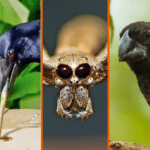Animals are fascinating creatures, and sometimes their actions leave us scratching our heads or laughing out loud. What might seem like a silly or puzzling behavior often has a logical explanation rooted in survival, communication, or adaptation. Let’s dive into some of the funniest misunderstood animal behaviors and uncover the science (and humor) behind them. By the end, you’ll not only laugh but also learn some wild facts about the animal kingdom.
Why Do Dogs Chase Their Tails?
If you’ve ever watched a dog spin in circles chasing its own tail, you’ve probably burst out laughing. It looks ridiculous, almost as if the dog doesn’t realize the tail is attached to its own body. However, this behavior can have several explanations:
- Curiosity: Puppies, in particular, chase their tails because they’re still learning about their own bodies.
- Boredom: Sometimes, dogs chase their tails when they’re under-stimulated and looking for entertainment.
- Attention-Seeking: If a dog learns that tail-chasing makes humans laugh, it might repeat the behavior for the reaction.
Fun Fact #1: Did you know some dogs even learn to catch their tails and chew on them, only to look utterly confused afterward?
Why Do Cats Knock Things Over?

Cats are notorious for sitting on a counter and slowly pushing objects off the edge while staring you straight in the eye. What gives?
- Hunting Instincts: In the wild, cats use their paws to test objects or prey, swatting to see if they move.
- Curiosity: Cats are naturally inquisitive. Knocking over objects helps them explore their environment.
- Demand for Attention: If you’re ignoring your feline friend, they might push things over to grab your focus.
While it’s frustrating to clean up a shattered glass or scattered pens, it’s all part of your cat’s charm. Or at least, that’s what they want you to think.
Fun Fact #2: Domestic cats are believed to knock things over more often because they’ve learned that humans will clean up after them!
Why Do Birds Puff Up?
Watching a bird puff up into a little feathery ball can be incredibly amusing, but this behavior isn’t just for show:
- Staying Warm: Birds fluff up their feathers to trap heat and keep themselves warm, especially in colder climates.
- Relaxation: A puffed-up bird is often content and resting.
- Intimidation: Some birds puff up to appear larger and ward off potential threats.
Next time you see a bird looking like a feathered basketball, know that it’s likely cozy or trying to assert its dominance. Either way, it’s a win for cuteness.
Fun Fact #3: Penguins huddle together and puff up their feathers to survive extreme Antarctic temperatures, forming nature’s version of a heated blanket.
Why Do Goats “Faint”?

Goats that suddenly freeze and topple over may look like they’re pulling a prank, but it’s actually a condition called myotonia congenita. Here’s what happens:
- Muscle Response: In fainting goats, their muscles temporarily stiffen when they’re startled.
- No Pain: Despite appearances, the goats don’t actually lose consciousness, and it doesn’t hurt them.
- Evolutionary Quirk: This genetic trait likely developed as a byproduct of domestication rather than natural survival.
Seeing a herd of goats dramatically “faint” at the sound of a sudden noise might look like a scene from a slapstick comedy, but rest assured, they’re perfectly fine.
Fun Fact #4: Fainting goats have become so popular online that they’ve earned the nickname “meme goats” for their viral videos.
Why Do Frogs Scream?
If you’ve ever tried to pick up a frog and heard an ear-piercing scream, you’re not alone in your surprise. Frogs don’t scream out of spite; they’re actually trying to save themselves.
- Startle Tactic: A loud, sudden scream can scare off predators or confuse them long enough for the frog to escape.
- Warning Signal: Frogs might scream to alert other frogs about danger.
- Stress Response: Sometimes, the scream is simply a reaction to being handled or feeling threatened.
The next time a frog screams at you, don’t take it personally. It’s just trying to survive in its own dramatic way.
Fun Fact #5: Some species of frogs can change their pitch mid-scream to make themselves sound even more terrifying to predators.
Why Do Elephants Swing Their Trunks?

An elephant swinging its trunk back and forth might look like it’s just goofing around, but this behavior serves multiple purposes:
- Communication: Trunk-swinging can be a way to signal mood, from relaxation to agitation.
- Cooling Off: Elephants swing their trunks to fan themselves or splash water.
- Curiosity: They also use their trunks to explore their surroundings, much like we use our hands.
It’s hard not to smile when you see a baby elephant awkwardly learning how to control its trunk. They’re like toddlers with a new toy they haven’t quite figured out.
The Beauty of Animal Quirks
While these behaviors might seem funny or strange to us, they often have deeper meanings tied to an animal’s survival, communication, or adaptation. The next time you see your dog chasing its tail or a bird fluffing up into a ball, remember that there’s a method to the madness. And, of course, keep laughing—because the animal kingdom is endlessly entertaining.
Animals may not share our language, but their actions speak volumes, often in ways that leave us both informed and amused. Who knows? The more we observe, the more we’ll uncover about their lives—and maybe even a little about ourselves.



